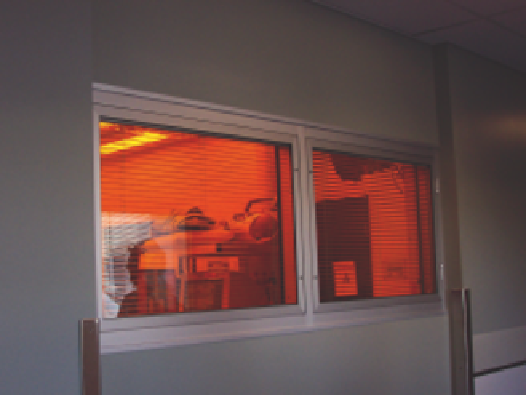Biomedical Engineering Reference
In-Depth Information
(
A
)
(
B
)
(
C
)
Figure 17.1
(
A
) Signs and goggles posted properly to establish the NOHA. Signs (
B
) displayed and (
C
) not visibly displayed when laser is not in use.
Source
:
Courtesy of Princess Alexandra Hospital, Brisbane, Australia.
Ocular Hazards and Protection
Class 3b and Class 4 lasers, as well as certain uses of other classes
(1,2,4) have the potential to damage the eye through both
direct and refl ected impact, and should NEVER be operated
without fi rst assessing the need for proper protective eyewear.
The classifi cation of the laser is based on whether or not the
MPE is longer or shorter than the human aversion response.
MPE is a calculation that determines how long an unprotected
eye can be exposed to a laser beam before injury occurs. The
aversion response is the autonomic response (within 0.25 sec-
onds) of the eye moving away from an intense light.
The lower classifi cations (1,2) have extended MPE measure-
ments and do not require protective eyewear, since the human
eye will avert from the bright light long before the beam can
injure the unprotected eye.
In the case of a higher classifi cation (5,6) the MPE is shorter
than the aversion response, and therefore, protective eyewear
must be worn at all times during laser activation.
Safety precautions, including eye protection, fl ammability,
refl ection, and administrative control measures, are determined
Figure 17.2
Installed permanent window protective covering for argon laser
457-514 nm.
Source
: Courtesy of KenTek Corporation and Princess Alexandra
Hospital, Brisbane, Australia.


















